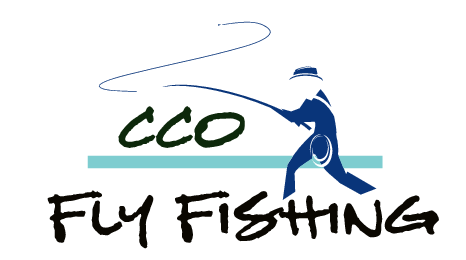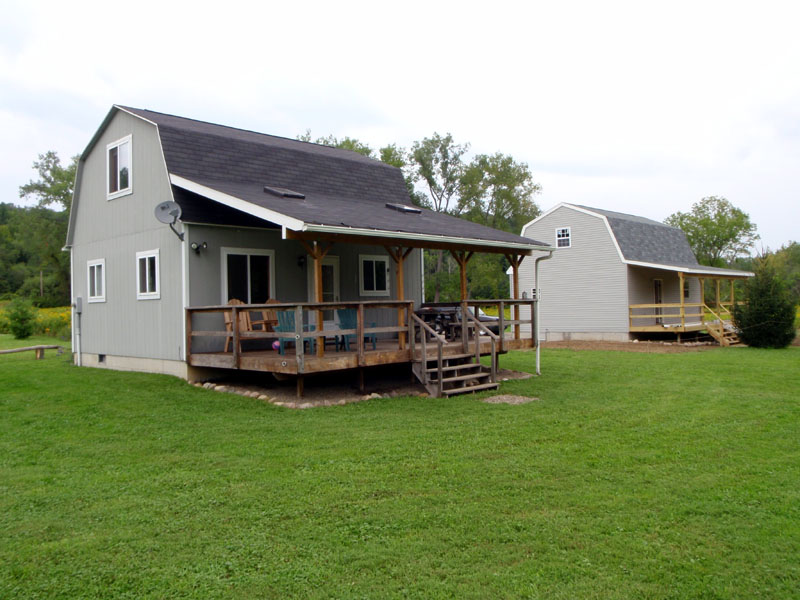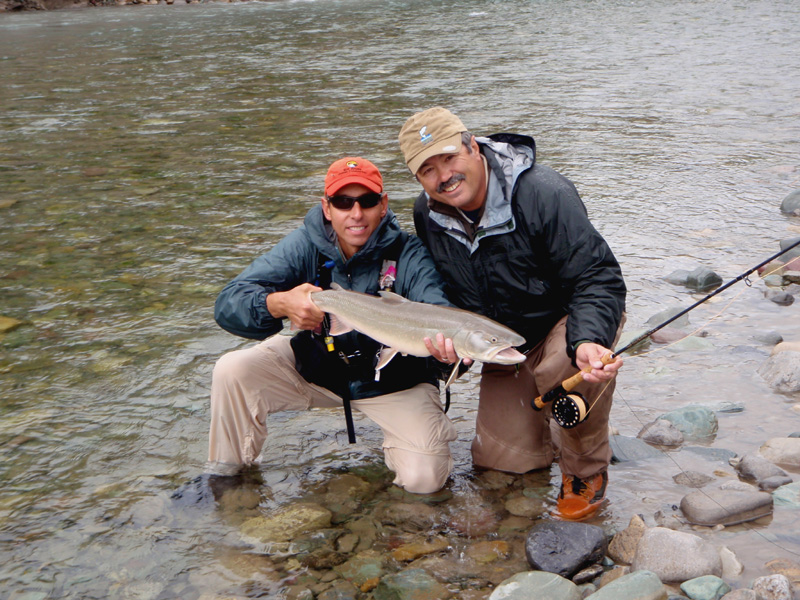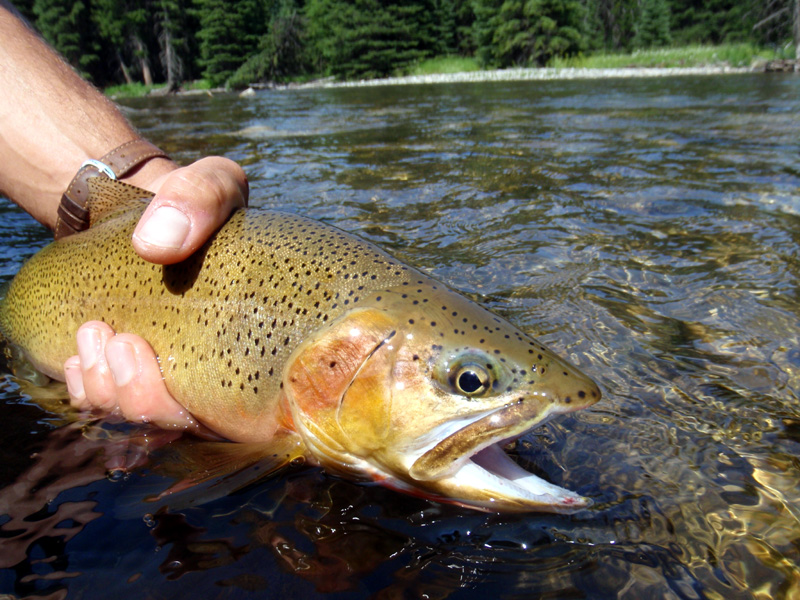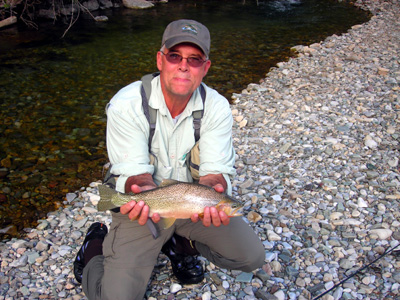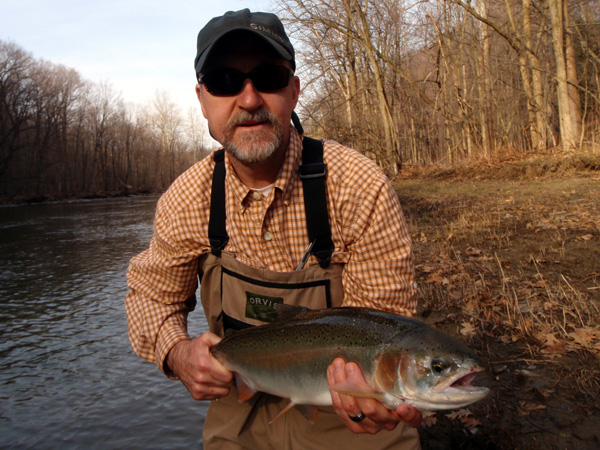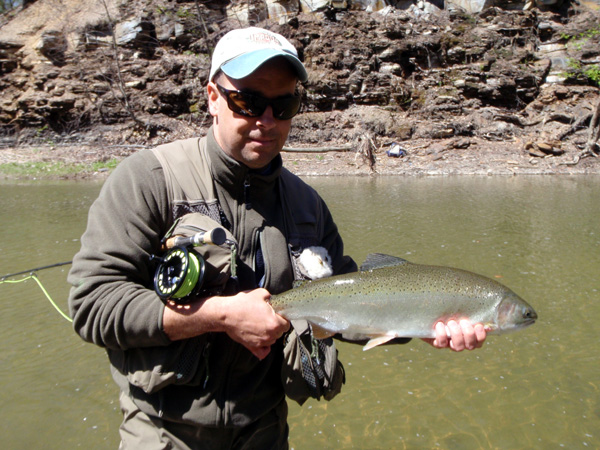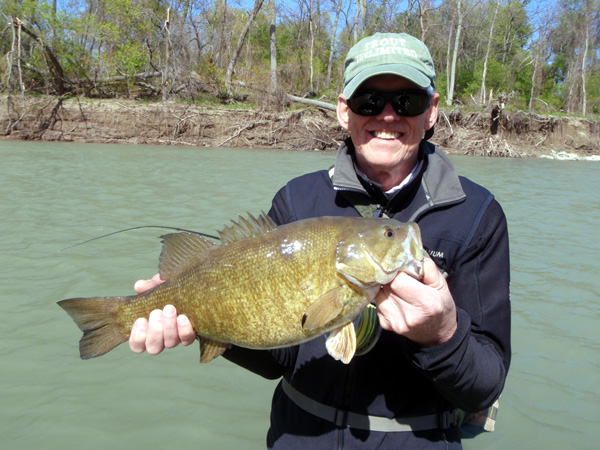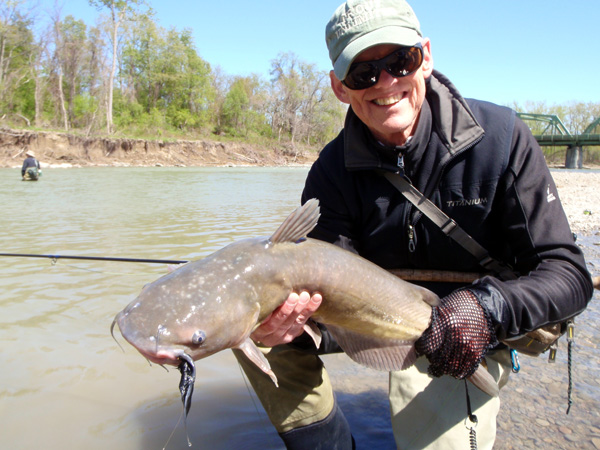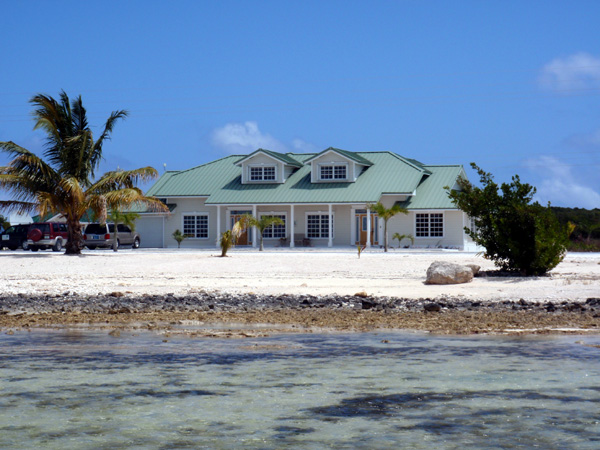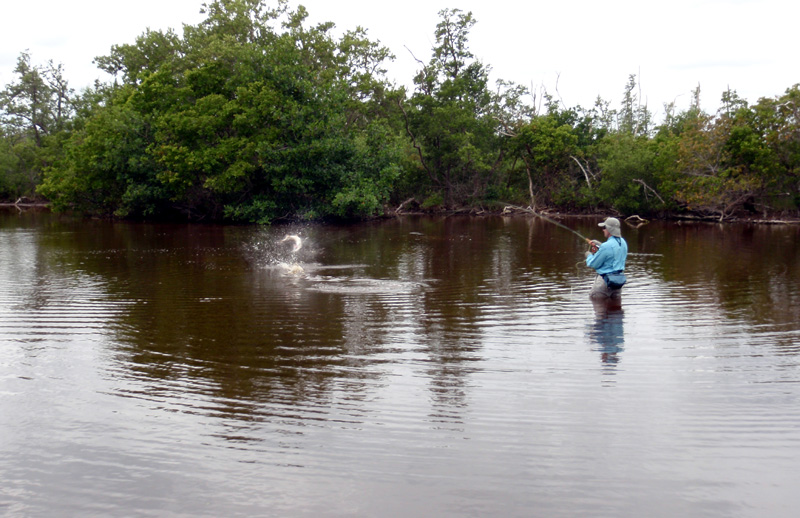CCO Fly Fishing Travel
Please consider us when booking a fishing trip. Let us work for you and help you plan your next fishing adventure. Our assistance does not add any additional cost to your trip. And we'll supply you with a complimentary fly box with assorted patterns that are productive at your destination.
Whether you want to fish for bonefish in the Bahamas, permit, snook and tarpon in Mexico or Belize, bonefish & trevally in the Seychelles or South Pacific, salmon & trout in Russia or Alaska, wild trout in Montana, Wyoming, Idaho, Argentina or Chile, or steelhead in British Columbia, we can help you fulfill your dream and ensure that your trip is well planned and organized.
 "Hi Vince: Thanks for putting the trip together. You ALWAYS do a great job. As a solo going on a trip like this, it's a concern that the guys going might not be open to a new guy but that was surely not the case. We had a terrific bunch of anglers and I for one would like to hit another spot with the same guys." Gary Rotolo--Colorado
"Hi Vince: Thanks for putting the trip together. You ALWAYS do a great job. As a solo going on a trip like this, it's a concern that the guys going might not be open to a new guy but that was surely not the case. We had a terrific bunch of anglers and I for one would like to hit another spot with the same guys." Gary Rotolo--Colorado
For more information, or to book a trip, contact us anytime @ 716-479-2327 or e-mail [email protected]
2010 Hosted Trip Photos & Reports
2011 Hosted Trips
 Here's our lineup of hosted saltwater trips scheduled for the winter and spring of 2011. If you're considering joining us for some saltwater action, please get in touch now to reserve your spot.
Here's our lineup of hosted saltwater trips scheduled for the winter and spring of 2011. If you're considering joining us for some saltwater action, please get in touch now to reserve your spot.
 We are returning to Crooked Island in 2011, after taking last year off. Several of our guests specifically requested a return to Crooked, and we understand why. Crooked offers one of the best deals in bonefishing
We are returning to Crooked Island in 2011, after taking last year off. Several of our guests specifically requested a return to Crooked, and we understand why. Crooked offers one of the best deals in bonefishing
anywhere. Great guides, food and lodging, and a diverse fishing program make Crooked Island in the southern Bahamas a must visit for all anglers.
 We are also hosting a week on Los Roques, Venezuela, which has quietly become known as one of the best bonefishing destinations anywhere. It is located near the equator, and less likely to be affected by winter cold fronts. It's known for #'s bones and big bonefish.
We are also hosting a week on Los Roques, Venezuela, which has quietly become known as one of the best bonefishing destinations anywhere. It is located near the equator, and less likely to be affected by winter cold fronts. It's known for #'s bones and big bonefish.
 Our hosted trips are great for single anglers, and we'll pair you up with another angler so you can enjoy the double occupancy rates. Our hosts travel with all guests, and we bring extra flies and equipment, so no one will ever be lacking flies, or a good rod and reel in the event of breakage. We're also there to assist in many other ways--from rigging and knots, to fishing techniques and photographs. Our goal is for all guests to have a truly memorable adventure.
Our hosted trips are great for single anglers, and we'll pair you up with another angler so you can enjoy the double occupancy rates. Our hosts travel with all guests, and we bring extra flies and equipment, so no one will ever be lacking flies, or a good rod and reel in the event of breakage. We're also there to assist in many other ways--from rigging and knots, to fishing techniques and photographs. Our goal is for all guests to have a truly memorable adventure.
*Los Roques, Venezuela


 (January 8-15, 2011)
(January 8-15, 2011)
*Acklins Island, Bahamas Hosted DIY (March 19-26, 2011)
*Crooked Island, Bahamas (March 26-April 2, 2011)
*Eleuthera Hosted DIY Bonefishing (April 16-23, 2011)
*Catskills Trout Camp 
 (June, 2011)
(June, 2011)
*Fernie, British Columbia (August, 2011)
We hope you can make it--these trips are a blast--great fishing, food and camaraderie, and some of the most spectacular scenery anywhere. We accompany all anglers on our hosted trips to help with tackle, rigging, fishing techniques--anything our guests need.
New DIY Lodging on Acklins Island
 This new and modern bed & breakfast is located on the water in north-central Acklins Island (Mason's Bay) and is extremely comfortable! All suites are A/C and have satellite tv. The bonefish suite is a 2 bedroom, 2 bath apartment with a full kitchen that is ideal for groups of 4 anglers. Rooms are separate from main residence which insures privacy. Pure, unlimited fresh water is supplied by their modern reverse osmosis system. Ivel's is a wonderful place to spend a week exploring all that Acklins Island has to offer. All packages at Ivels include truck rental!
This new and modern bed & breakfast is located on the water in north-central Acklins Island (Mason's Bay) and is extremely comfortable! All suites are A/C and have satellite tv. The bonefish suite is a 2 bedroom, 2 bath apartment with a full kitchen that is ideal for groups of 4 anglers. Rooms are separate from main residence which insures privacy. Pure, unlimited fresh water is supplied by their modern reverse osmosis system. Ivel's is a wonderful place to spend a week exploring all that Acklins Island has to offer. All packages at Ivels include truck rental!
 Ivel's is located just north of the Spring Point airport with gorgeous views looking out into the bight of Acklins. It is the perfect place to stay for those wishing to fish & explore the middle and more remote southern end of Acklins (and the northern end is only 1/2 hour by car). There are often bonefish right out in front of Ivels. There are two blue holes right in front of Ivels, and you are a short drive from a very large & beautiful blue hole which has all kinds of fish swimming in it's deep blue waters. The flats surrounding Ivels are located anywhere from 5 minutes to 1 1/2 hours away, and there are more productive areas than could be explored in a month.
Ivel's is located just north of the Spring Point airport with gorgeous views looking out into the bight of Acklins. It is the perfect place to stay for those wishing to fish & explore the middle and more remote southern end of Acklins (and the northern end is only 1/2 hour by car). There are often bonefish right out in front of Ivels. There are two blue holes right in front of Ivels, and you are a short drive from a very large & beautiful blue hole which has all kinds of fish swimming in it's deep blue waters. The flats surrounding Ivels are located anywhere from 5 minutes to 1 1/2 hours away, and there are more productive areas than could be explored in a month.
A Do-it-yourself Adventure
by Andy Klein
 Here we were, three seasoned anglers and one rookie that we had roped into going with us to help defray the cost of a bonefishing trip. The new guy, a 50-year-old myopic whippersnapper affectionately nicknamed "The Kid", actually wanted to catch fish, whereas we simply wanted him to pay for the opportunity of spending time with us. Also, we're not getting any younger and The Kid is a cardiologist, so we three agreed that a spare cardiologist might be a good thing to have around. The three experienced guys could spot fish, cast beautifully, and play a bonefish competently, but admittedly, none of us could do all three on the same given day, let alone the same fish. So, we set out to find a place where The Kid could have a guide and we, the frugal (okay, cheap) pros, could access flats on our own.
Here we were, three seasoned anglers and one rookie that we had roped into going with us to help defray the cost of a bonefishing trip. The new guy, a 50-year-old myopic whippersnapper affectionately nicknamed "The Kid", actually wanted to catch fish, whereas we simply wanted him to pay for the opportunity of spending time with us. Also, we're not getting any younger and The Kid is a cardiologist, so we three agreed that a spare cardiologist might be a good thing to have around. The three experienced guys could spot fish, cast beautifully, and play a bonefish competently, but admittedly, none of us could do all three on the same given day, let alone the same fish. So, we set out to find a place where The Kid could have a guide and we, the frugal (okay, cheap) pros, could access flats on our own.
 Of all of us, Marvin was the most experienced and serious about fishing. He's the guy who arrives on trips with one shirt, one pair of pants, and hopefully some underwear. But he has 1400 flies, extra rods, extra reels, extra backing and a complete fly-tying set. He brings bungee cords, pipe cleaners, glue, epoxy, and a tape measure. I've never, in all my years of fishing, ever needed a tape measure.
Of all of us, Marvin was the most experienced and serious about fishing. He's the guy who arrives on trips with one shirt, one pair of pants, and hopefully some underwear. But he has 1400 flies, extra rods, extra reels, extra backing and a complete fly-tying set. He brings bungee cords, pipe cleaners, glue, epoxy, and a tape measure. I've never, in all my years of fishing, ever needed a tape measure.
 Tom arrives with whatever he remembered to pack on the morning of departure. He usually comes equipped with a rod and reel, but rarely bothers with extraneous equipment such as flies or leaders. But what he does have is the most expensive stuff in the world that has not been purchased by the Pentagon.
Tom arrives with whatever he remembered to pack on the morning of departure. He usually comes equipped with a rod and reel, but rarely bothers with extraneous equipment such as flies or leaders. But what he does have is the most expensive stuff in the world that has not been purchased by the Pentagon.
 I am, quite simply, a lousy bonefisherman. And trout fisherman. I pride myself on buying the cheapest gear available. I think graphite is overrated, as are large-arbor reels, stainless steel anything, new fly lines, or reels with drag. So I buy an awful lot of junk, and end up spending more than Tom on his top-flight gear. But somehow it feels better to me.
I am, quite simply, a lousy bonefisherman. And trout fisherman. I pride myself on buying the cheapest gear available. I think graphite is overrated, as are large-arbor reels, stainless steel anything, new fly lines, or reels with drag. So I buy an awful lot of junk, and end up spending more than Tom on his top-flight gear. But somehow it feels better to me.
 The four of us considered going to the Florida Keys, but figured a guide there would criticize The Kid's inexperienced technique, destroy his fragile ego, and send him into therapy for years, which would definitely bump up the cost of the trip.
The four of us considered going to the Florida Keys, but figured a guide there would criticize The Kid's inexperienced technique, destroy his fragile ego, and send him into therapy for years, which would definitely bump up the cost of the trip.
 Among the four of us, we had tormented numerous guides, and just a few fish, in Belize, Roatan, Grand Bahama, Andros, Abaco, Eleuthera, Harbor Island, Long Island, Cat Island, Turks and Caicos, and Mayaguana. The latter fit the bill better than the others, but is limited by the small number of available flats. After prolonged discussions and negotiations, we all decided on Acklins - mostly because none of us had ever heard of it before and wanted to roll our eyes in fake exasperation at jealous friends and colleagues, when they asked, "Where?"
Among the four of us, we had tormented numerous guides, and just a few fish, in Belize, Roatan, Grand Bahama, Andros, Abaco, Eleuthera, Harbor Island, Long Island, Cat Island, Turks and Caicos, and Mayaguana. The latter fit the bill better than the others, but is limited by the small number of available flats. After prolonged discussions and negotiations, we all decided on Acklins - mostly because none of us had ever heard of it before and wanted to roll our eyes in fake exasperation at jealous friends and colleagues, when they asked, "Where?"
 Thus, we settled on this Bahamian island 225 miles southeast of Nassau, with a population of around 400 people and 60 million mosquitoes. In case you were not aware, the island just got electricity in 1998, and is best known for cascarilla bark, used in making Campari aperitif. Have you ever had Campari? Do you know anyone who's ever had Campari? Of course not - that's because it tastes like tree bark.
Thus, we settled on this Bahamian island 225 miles southeast of Nassau, with a population of around 400 people and 60 million mosquitoes. In case you were not aware, the island just got electricity in 1998, and is best known for cascarilla bark, used in making Campari aperitif. Have you ever had Campari? Do you know anyone who's ever had Campari? Of course not - that's because it tastes like tree bark.
 We contacted Vince Tobia at Cattaraugus Creek Outfitters, who arranged everything for us on Acklins, from accommodations, to a packing list, to maps of choice bonefish flats. We all told our wives we were leaving for a conference and flew to Nassau on a Friday in early December, staying overnight so we could catch an early Saturday morning flight to Spring Point, Acklins. The Bahamas Air flight was only a half hour late in leaving Nassau, but the idea of fishing in a few, short hours made us giddy with excitement. It was cold back home, warm as toast in Nassau, and we had a direct flight and would be fishing by noon. We arrived on Acklins to find that the bags - which included our rods, reels, and flies - were enjoying private time back at the Nassau airport. We stormed off in search of help. We accosted the airline representative and tried begging, bribery, threats and sobbing - all to no avail. When the man barricaded himself in his office, Marvin turned to us and said, "Let me handle this." He tapped gingerly on the door and slid inside when the man opened it. Finally, after dealing with the situation in a very effective manner, Marvin, in as reasonable a tone as he could muster, asked the airline representative, "Do you promise to get our bags today? The man nodded enthusiastically as he replied, "Mmmgrndle. So he untied him and removed his gag. Anyway, that's how Marvin described it when he came out of the man's office.
We contacted Vince Tobia at Cattaraugus Creek Outfitters, who arranged everything for us on Acklins, from accommodations, to a packing list, to maps of choice bonefish flats. We all told our wives we were leaving for a conference and flew to Nassau on a Friday in early December, staying overnight so we could catch an early Saturday morning flight to Spring Point, Acklins. The Bahamas Air flight was only a half hour late in leaving Nassau, but the idea of fishing in a few, short hours made us giddy with excitement. It was cold back home, warm as toast in Nassau, and we had a direct flight and would be fishing by noon. We arrived on Acklins to find that the bags - which included our rods, reels, and flies - were enjoying private time back at the Nassau airport. We stormed off in search of help. We accosted the airline representative and tried begging, bribery, threats and sobbing - all to no avail. When the man barricaded himself in his office, Marvin turned to us and said, "Let me handle this." He tapped gingerly on the door and slid inside when the man opened it. Finally, after dealing with the situation in a very effective manner, Marvin, in as reasonable a tone as he could muster, asked the airline representative, "Do you promise to get our bags today? The man nodded enthusiastically as he replied, "Mmmgrndle. So he untied him and removed his gag. Anyway, that's how Marvin described it when he came out of the man's office.
 Dejectedly, the four of us piled into a car, and drove out of the airport. Immediately we encountered a friendly hand-painted sign, certain to raise our spirits. That is, until we read it carefully: "Welcome to Acklins Island, Bonefish Haven". A haven is, by definition, a refuge, a peaceful sanctuary. This sign gave us the distinct feeling that we were about to spend a week fishing in the Georgia Aquarium - we could look all we wanted, but we couldn't catch squat. Not a good omen. We continued northward and fortunately the road itself was in surprisingly good shape, at least for the first 33 feet, and then all hell broke loose - the tar disappeared, and the road became a series of puddles and potholes - some large and some huge. We hit a particularly massive bump and the car shot upwards. "Hang on!" I shouted, just as I heard three heads hit the roof. "What's going on? "cried Marvin in alarm, as the car plummeted into a ravine and struggled to climb out. Tom grunted through gritted teeth, "It's a carpet-bombing practice site." (Full Disclosure: Tom and Marvin said that if I mentioned them in the article they'd each buy me a beer. The Kid obviously offered nothing.)
Dejectedly, the four of us piled into a car, and drove out of the airport. Immediately we encountered a friendly hand-painted sign, certain to raise our spirits. That is, until we read it carefully: "Welcome to Acklins Island, Bonefish Haven". A haven is, by definition, a refuge, a peaceful sanctuary. This sign gave us the distinct feeling that we were about to spend a week fishing in the Georgia Aquarium - we could look all we wanted, but we couldn't catch squat. Not a good omen. We continued northward and fortunately the road itself was in surprisingly good shape, at least for the first 33 feet, and then all hell broke loose - the tar disappeared, and the road became a series of puddles and potholes - some large and some huge. We hit a particularly massive bump and the car shot upwards. "Hang on!" I shouted, just as I heard three heads hit the roof. "What's going on? "cried Marvin in alarm, as the car plummeted into a ravine and struggled to climb out. Tom grunted through gritted teeth, "It's a carpet-bombing practice site." (Full Disclosure: Tom and Marvin said that if I mentioned them in the article they'd each buy me a beer. The Kid obviously offered nothing.)
 We bumped and dodged our way onward, aggravated and slightly terrified until the realization hit me: "Guys, this is a rental." All of a sudden it became bumper cars at 40 miles per hour, and loads of fun.
We bumped and dodged our way onward, aggravated and slightly terrified until the realization hit me: "Guys, this is a rental." All of a sudden it became bumper cars at 40 miles per hour, and loads of fun.
 The road improved north of Mason's Bay, becoming about as drivable as the lunar surface. We finally made it to Chester's Highway Inn, feigning relief that we lacked heavy bags to lug. We each grabbed a beer since it was nearly noon, and stared morosely at the inviting flats in front of the lodge. A welcoming school of eight bonefish swam towards us, and to add to our torment, started tailing and feeding aggressively. They scattered satisfactorily when we threw our bottles at them. "Best cast of my life," muttered Tom.
The road improved north of Mason's Bay, becoming about as drivable as the lunar surface. We finally made it to Chester's Highway Inn, feigning relief that we lacked heavy bags to lug. We each grabbed a beer since it was nearly noon, and stared morosely at the inviting flats in front of the lodge. A welcoming school of eight bonefish swam towards us, and to add to our torment, started tailing and feeding aggressively. They scattered satisfactorily when we threw our bottles at them. "Best cast of my life," muttered Tom.
 Later that afternoon our bags and rods were delivered, their arrival well coordinated with the departure of the fish.
Later that afternoon our bags and rods were delivered, their arrival well coordinated with the departure of the fish.
 The lodge is exceptional for its delightful and accommodating owners, Julius and Arnette Chisholm, as well as its unbelievably delicious food, its spotlessly clean rooms, and the flat out front that houses more fish in it than I could count. And I'm a good counter.
The lodge is exceptional for its delightful and accommodating owners, Julius and Arnette Chisholm, as well as its unbelievably delicious food, its spotlessly clean rooms, and the flat out front that houses more fish in it than I could count. And I'm a good counter.
 The morning after our arrival on Acklins, The Kid and I fished with a guide, Terrance, around Lovely Bay. Terrance was a great guide with eagle eyes and an easy-going manner. He's also easy to spot around the island - he's the guy wearing a wool watch cap when the temperature plummets down to eighty-five degrees. The flats in the northern end of the island were spectacular, especially Copper Bottom and Bird Cay. We had shots at singles and pairs of fish, and I tried not be too condescending towards the young upstart when he couldn't spot fish nor cast as fluidly as I. As I vividly recall, we caught the exact same number of fish, despite his photographic "evidence" showing him holding five different fish to my one. On our final flat of the day, Terrance spotted a small school of about five hundred fish (five hundred!) so The Kid could practice casting, stripping, fighting, and releasing bonefish in the three- to four-pound range. I haughtily refused to demean myself by casting to such a large school, so I practiced wading and holding my rod in the ready position. The Kid went with the guide for two more days, with a rotation of the other two accomplished anglers. He cleaned their clocks, too.
The morning after our arrival on Acklins, The Kid and I fished with a guide, Terrance, around Lovely Bay. Terrance was a great guide with eagle eyes and an easy-going manner. He's also easy to spot around the island - he's the guy wearing a wool watch cap when the temperature plummets down to eighty-five degrees. The flats in the northern end of the island were spectacular, especially Copper Bottom and Bird Cay. We had shots at singles and pairs of fish, and I tried not be too condescending towards the young upstart when he couldn't spot fish nor cast as fluidly as I. As I vividly recall, we caught the exact same number of fish, despite his photographic "evidence" showing him holding five different fish to my one. On our final flat of the day, Terrance spotted a small school of about five hundred fish (five hundred!) so The Kid could practice casting, stripping, fighting, and releasing bonefish in the three- to four-pound range. I haughtily refused to demean myself by casting to such a large school, so I practiced wading and holding my rod in the ready position. The Kid went with the guide for two more days, with a rotation of the other two accomplished anglers. He cleaned their clocks, too.
 Over the next few days we fished several flats around the island, driving to Snug Corner, Delectable Bay, Mason's Bay, Pestell Point, Lovely Bay, and other gorgeous spots. We rented a car and drove wherever we wanted, whenever we wanted, and had only ourselves to blame when we did poorly. We kayaked to Atwood Harbor and explored areas that seem to have seen no one since Columbus guided his group of anglers in 1492. We found fish everywhere, including one permit that laughed uproariously at our presented fly, and a tarpon lurking at the base of a mangrove hammock.
Over the next few days we fished several flats around the island, driving to Snug Corner, Delectable Bay, Mason's Bay, Pestell Point, Lovely Bay, and other gorgeous spots. We rented a car and drove wherever we wanted, whenever we wanted, and had only ourselves to blame when we did poorly. We kayaked to Atwood Harbor and explored areas that seem to have seen no one since Columbus guided his group of anglers in 1492. We found fish everywhere, including one permit that laughed uproariously at our presented fly, and a tarpon lurking at the base of a mangrove hammock.
 Every night we'd sit around drinking Kaliks, the Bahamas' national beer, talking about our day's exploits and offering excuses ranging from clouds to tides, wind, spooky fish, and dust storms in the Sahara. We would then run like mad to our rooms to escape the clouds of mosquitoes that enveloped us. The local islanders would swat languorously at the little nuisances, while the four of us went into fits of slapping and waving at the thirsty bastards. We each used enough DEET to be considered toxic dump sites, but it worked. The thick layer of spray prevented the mosquitoes from removing all of our blood, so by the time we returned home we were merely severely anemic.
Every night we'd sit around drinking Kaliks, the Bahamas' national beer, talking about our day's exploits and offering excuses ranging from clouds to tides, wind, spooky fish, and dust storms in the Sahara. We would then run like mad to our rooms to escape the clouds of mosquitoes that enveloped us. The local islanders would swat languorously at the little nuisances, while the four of us went into fits of slapping and waving at the thirsty bastards. We each used enough DEET to be considered toxic dump sites, but it worked. The thick layer of spray prevented the mosquitoes from removing all of our blood, so by the time we returned home we were merely severely anemic.
 Other than my petty complaints, Acklins is truly a wonderful destination for those who want to get close to bonefish and away from other bonefisherman. During the week we were there, there were only three other anglers on the entire island. We never saw another boat out on the water, nor heard a car honk, nor heard or said a word said in anger (other than a few choice words directed at a certain tailing fish that must have been a vegan). Maybe we just couldn't hear above the whine of the mosquitoes. For those who want to go to casinos, nightclubs, spas, or water parks, I'd recommend that you look elsewhere. For those interested in fishing and more fishing, with shots at many fish, and who want exceptionally capable guides or a do-it-yourself setting, consider Acklins. Just remember to carry your rods on the plane from Nassau, and bring Geritol. Lots of Geritol. And consider taking The Kid with you. He's a nice guy who doesn't snore and will pay one fourth of the expenses. And did I mention he's a cardiologist?
Other than my petty complaints, Acklins is truly a wonderful destination for those who want to get close to bonefish and away from other bonefisherman. During the week we were there, there were only three other anglers on the entire island. We never saw another boat out on the water, nor heard a car honk, nor heard or said a word said in anger (other than a few choice words directed at a certain tailing fish that must have been a vegan). Maybe we just couldn't hear above the whine of the mosquitoes. For those who want to go to casinos, nightclubs, spas, or water parks, I'd recommend that you look elsewhere. For those interested in fishing and more fishing, with shots at many fish, and who want exceptionally capable guides or a do-it-yourself setting, consider Acklins. Just remember to carry your rods on the plane from Nassau, and bring Geritol. Lots of Geritol. And consider taking The Kid with you. He's a nice guy who doesn't snore and will pay one fourth of the expenses. And did I mention he's a cardiologist?
Explorers & Adventurers Wanted
 Do you want to feel like a kid again when you were exploring the creeks and farm ponds of your youth? Join us on one of our hosted do-it-yourself bonefishing adventures, or embark on one yourself, with our help.
Do you want to feel like a kid again when you were exploring the creeks and farm ponds of your youth? Join us on one of our hosted do-it-yourself bonefishing adventures, or embark on one yourself, with our help. 


 Our do-it--yourself saltwater trips are the perfect tonic for the sluggish economy, and also a great way to beat the winter blues. They often cost less than half of a fully guided trip, yet include everything that a traditional lodge does, except the guides.
Our do-it--yourself saltwater trips are the perfect tonic for the sluggish economy, and also a great way to beat the winter blues. They often cost less than half of a fully guided trip, yet include everything that a traditional lodge does, except the guides.
 For those of you that enjoy fishing and exploring on your own, without the assistance and expense of a guide, these trips are for you. There are few things in fly fishing more rewarding than successfully catching bonefish and other flats species on your own, while exploring a beautiful remote island in the Bahamas.
For those of you that enjoy fishing and exploring on your own, without the assistance and expense of a guide, these trips are for you. There are few things in fly fishing more rewarding than successfully catching bonefish and other flats species on your own, while exploring a beautiful remote island in the Bahamas.
 Our hosted DIY trips will be on the islands of Acklins & Eleuthera, Bahamas, in March & April 2011.
Our hosted DIY trips will be on the islands of Acklins & Eleuthera, Bahamas, in March & April 2011.
Testimonial from our Acklins DIY trip this March
 "Dear Vince, With apologies from the terminally computer challenged, I am mailing a DVD of pics from our outstanding Acklins Island adventure.
"Dear Vince, With apologies from the terminally computer challenged, I am mailing a DVD of pics from our outstanding Acklins Island adventure.
 My spirit remains on Bahamas time, and the daydreams of azure &
My spirit remains on Bahamas time, and the daydreams of azure &
turquoise waters are ever present. My initial hope was to theoretically
to learn a bit of what fly fishing for bonefish is about. In reality,
it was like throwing gasoline on a fire. This trip was a life changing
experience. It is doubtful I'll ever "get over" a raging case of
bonefish fever.
Thank you for everything you did to organize & coordinate the Acklins trip!
 I look forward to the next therapy session...
I look forward to the next therapy session...
 Cordially,
Cordially,
Catch Interactive Online Magazine
 Check out this cool online magazine which has excellent photography
Check out this cool online magazine which has excellent photography
"All men are equal before trout."



 (January 8-15, 2011)
(January 8-15, 2011)
 (June, 2011)
(June, 2011)